Stephen Hawking's Story
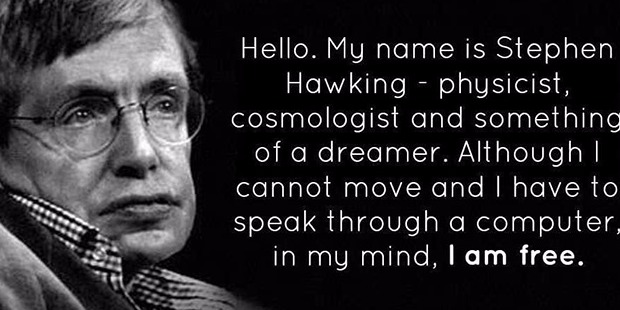
15th March 2018: In 2006, Stephen Hawking had posed a question on the net, “In a world that is in chaos politically, socially and environmentally, how can the human race sustain another 100 years?” How true were his words, as death engulfs the genius mind in its arms forever!
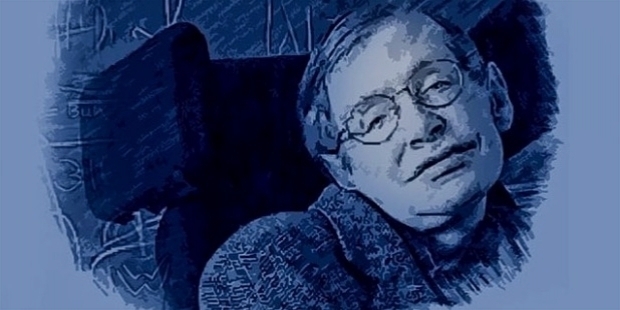
Early morning of 14th March 2018, Stephen Hawking died peacefully in his home in Cambridge, England. Lucy, Robert and Tim Hawking, Stephen Hawking’s children issued a statement about the demise of their 76-year-old brilliant scientist father to put the world in a state of shock!
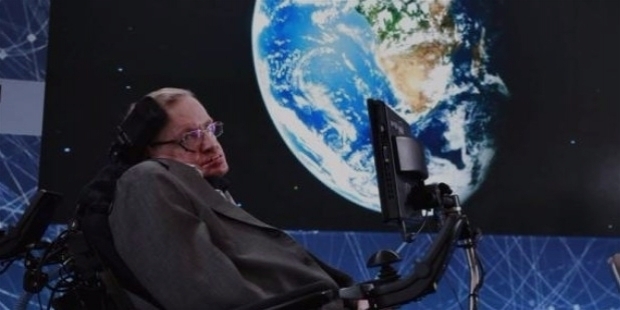
Extraordinary in every which way one can think of, Hawking’s life is full of inspiration, optimism, greatness, courage, perseverance, success and limitless exploration. He proved his doctor, who had diagnosed him with the motor neuron disease, wrong by outliving doctor’s diagnosis and went onto to achieve ultimate greatness in the World of Science after Albert Einstein. Hawking was a brilliant combination of a genius mind and a strong willpower.
Early Childhood:
Young Stephen was an idler in school studies during his early childhood. At the age of 9, Stephen was one among the worst in studies in his class. However, he put in a little effort to reach the average grades. Nonetheless, he was more inquisitive and practical in nature unlike other students in his class. He always explored uncharted territory, when children of his age were enjoying their childhood. He used to disassemble radios and clocks to understand its mechanism at an early age. In school, he was nicknamed ‘Einstein’ by his classmates for his inquisitive nature. His teachers and peers always saw a spark of brilliance in young Stephen.
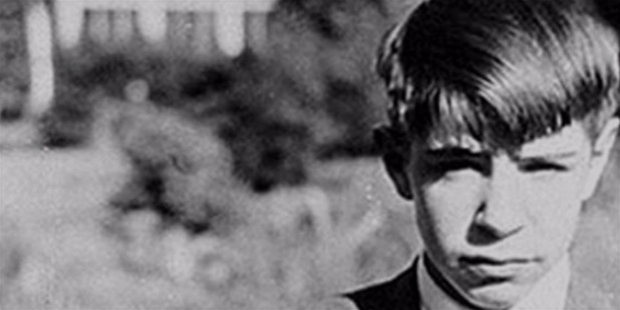
Academic Family:
His mother Isobel Walker was Scottish. Stephen’s father Frank Hawking studied medicine from the University of Oxford, while his mother studied Philosophy, Politics, and Economics from the University of Oxford, in spite of their parents’ families’ financial constraints. Frank met Isobel during the beginning of the Second World War and got married. Stephen was born in Oxford, Oxfordshire on the 8th of January 1942 in greater safety, amidst the raging war. Philippa and Mary, two daughters, were born to the couple after Stephen. The Hawkings adopted the fourth child Edward. After the World War was over, Frank Hawking became the Head of the Parasitology Division at the National Institute for Medical Research in 1950. The family moved to St. Albans in Hertfordshire. The academic family was looked down in awe as being eccentric and highly intelligent in their neighborhood. Each one in the family used to be engrossed reading books, even while having their meals. Their existence was austere.
Destined to Achieve Greatness
Stephen's father wanted his son to study medicine, like him. However, the young Hawking was more interested in Mathematics from his early childhood days. Frank wanted to send his son to Oxford. A scholarship was the only way because the family could not afford Oxford’s fees. Stephen aced the scholarship exams by obtaining a perfect score in Physics. While his father was happy about Stephen’s achieving the scholarship, he had to compromise to major in Physics from Oxford. Mathematics major was not being taught at Oxford at that time. Stephen’s brilliance focused on the bigger questions of Physics. He chose Cosmology to study the large universe. Destined to achieve greatness later in life, the path was chosen by the young genius. During his first year at Oxford, Stephen faced isolation and unhappiness. This state of being forced him to join Oxford’s rowing team. He became rowing team’s coxswains to control steering and stroke rate because of his thin built. As the coxswains, adventurous Hawking became very popular for playing an important role in various competitions. However, rigorous practice sessions affected Stephen’s studies drastically.
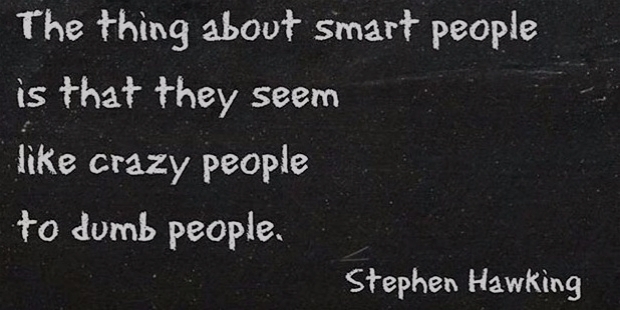
Hawking's Inspiration
The sign of general clumsiness first erupted during his graduation period. During his Christmas break, the family became concerned and insisted to meet a specialist for an opinion. During New Year’s Party, Stephen met Jane Wilde, his future wife. A week later, he celebrated the 21st birthday. Stephen underwent two weeks of hospitalization for the doctors to carry out multiple tests. The diagnosis shattered the Hawking’s family immensely. Stephen was diagnosed with ALS – Amyotrophic Lateral Sclerosis. In the neurological disease, also known as Lou Gehrig's Disease, wherein a patient loses control of their voluntary muscles. The doctors at the hospital did not give Stephen much time to live his life after the diagnosis. He proved all of them wrong by achieving greatness for more than 5 more decades of brilliance as one of the greatest minds in the world! Stephen Hawking has become an inspiration for millions in the field of science. However, this great soul got his inspiration from a boy, whom he saw dying of leukemia in the hospital. It opened Stephen eyes to acknowledge the fact that many are suffering much worse than him. He overlooked his sickness to dampen the spirit to love. Optimistic, Stephen and Jane began dating. Love blossomed and soon they were engaged. This union of two hearts sowed the seed of more strength for Stephen to outlive his dreaded disease.
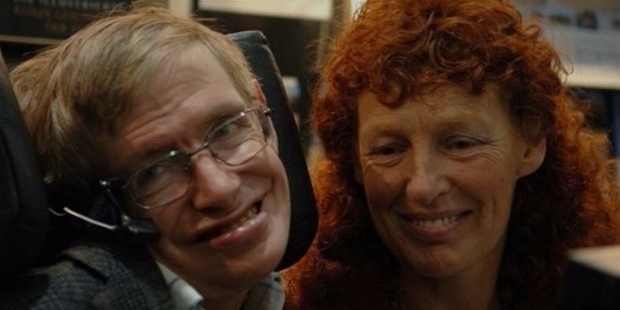
Memories of Undergraduate Years:
The genius mind found the academic work at Oxford to be ridiculously easy, so he was easily bored and used to be lonely. Robert Berman, Stephen’s Physics teacher recalled, “It was only necessary for him to know that something could be done, and he could do it without looking to see how other people did it.” However, to overcome his loneliness, Stephen joined the University College Boat Club to become very popular and went onto cultivate a daredevil image. The ‘condition of acceptance’ for his planned graduate study in Cosmology at the University of Cambridge was a first-class Honours’ degree. Having put in nearly a thousand hours of study in his three-year-course, Stephen decided he would answer only Theoretical Physics’ questions. He was anxious before the night of the exam. However, he managed to be on the borderline between first and second-class Honours, thereby making viva necessary. At the viva test, Stephen was upfront with the examiners. He was asked to describe his future plans. Stephen stated, “If you award me a First, I will go to Cambridge. If I receive a Second, I shall stay in Oxford, so I expect you will give me a First.” Robert Berman recalled, “Stephen was regarded much higher by teachers and examiners. Examiners were intelligent enough to realize, they were talking to someone far cleverer than most of themselves.” Stephen earned his first-class B. A. (Hons) degree in Natural Science.
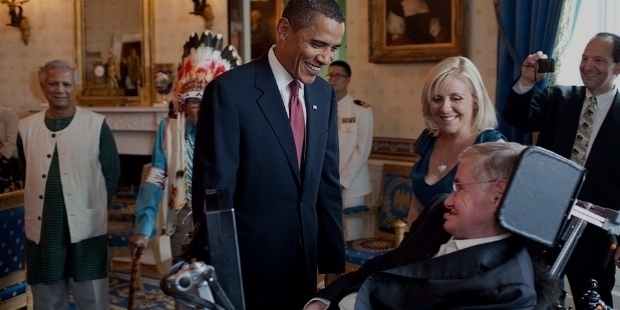
Memories of Post-Graduation Years:
After his graduation, Stephen visited Iran with his friend. October 1962, he commenced his graduate work at the Trinity Hall in Cambridge University. His journey towards greatness began with some disturbing difficulties as a doctoral student. Stephen was unhappy for not being assigned the noted astronomer Fred Hoyle as his Supervisor. Under the supervision of Dennis William Sciama, who was one of the founders of Modern Cosmology, Stephen found his knowledge of Mathematics to be inadequate for work in General Relativity and Cosmology. With doctors’ prediction of two more years to live, depression took a toll in Hawking. However, his doctors suggested he continued his further studies. Stephen was heartbroken and continuing studies seemed futile. Hawking had great difficulty walking without support. His speech became enigmatic. It was Dennis William Sciama, his Supervisor, who encouraged Stephen not to give up so easily. He returned to work and his brilliance became evident. June 1964, Hawking challenged publicly the work of Fred Hoyle and his student Jayant Narlikar during his lecture. His reputation for brashness and brilliance became known among his colleagues. The Big Bang Theory and the Steady State Theory were being debated in the Physics Community during the time Hawking was in his graduate studies. He was inspired by Roger Penrose’s theorem of a ‘Spacetime Singularity’ in the Centre of Black Holes. During 1965, Hawking applied Penrose’s thinking to the entire universe and wrote a thesis on the topic. A year later, in 1966, Hawking’s thesis was approved. Hawking received Research Fellowship at Gonville and Caius College after his thesis was approved. He achieved his Ph.D. in Applied Mathematics and Theoretical Physics, specializing in General Relativity and Cosmology in March 1966. Defying all odds to live for just two years, Dr. Stephen Hawking arrived on the bigger stage of the Universe. Roger Penrose’s essay and Hawking’s essay titled ‘Singularities and the Geometry of Spacetime’ shared top honors to win the prestigious Adams Prize in 1966.
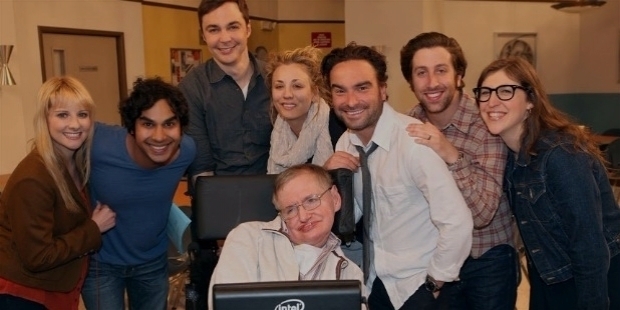
Career: 1966 - 1974:
Penrose and Hawking’s collaboration extended the singularity theorem concepts that the Universe might have started as a ‘Singularity’. In 1968, their joint essay received the runner-up prize at the Gravity Research Foundation Competition. Two years later, Hawking and Penrose published a proof that if the universe obeys the general theory of relativity and fits any of the models of physical cosmology developed by Alexander Friedmann, then it must have begun as a singularity.
Hawking went ahead to accept a specially created Fellowship for Distinction in Science to remain at Caius. Hawking postulated in 1970, which became known as the Second Law of Black Hole Dynamics, wherein the event horizon of a Black Hole can never get smaller. Together with James M. Bardeen and Brandon Carter, Hawking proposed the Four Laws of Black Hole Mechanics, drawing an analogy with Thermodynamics.
Hawking was irritated with Jacob Bekenstein, a graduate student of John Wheeler, who ultimately went onto correctly apply the Thermodynamic concepts literally. Hawking's work with Carter, Werner Israel and David C. Robinson strongly supported Wheeler's no-hair theorem, which stated that no matter what the original material from which a black hole is created, it can be completely described by the properties of mass, electrical charge and rotation in the early 1970s. January 1971, Hawking’s essay titled ‘Black Holes’ won the Gravity Research Foundation Award. ‘The Large Scale Structure of Space-Time’ was Hawking's first book written with George Ellis. It was published in 1973. Hawking moved into the study of Quantum Gravity and Quantum Mechanics in the beginning of 1973.
Russian scientists Yakov Borisovich Zel'dovich and Alexei Starobinsky’s works showed that Rotating Black Holes emit particles, according to the uncertainty principle. Hawking was annoyed because his much-checked calculations produced findings that contradicted his Second Law to support Bekenstein’s reasoning about their entropy.
Hawking presented his results from 1974, showed that Black Holes emit radiation, which is known today as ‘Hawking Radiation’, which may continue until they exhaust their energy and evaporate. The discovery was widely accepted as a significant breakthrough in Theoretical Physics after further research by the late 1970s. A few weeks after the announcement of ‘Hawking Radiation’, Hawking was elected a FRS – Fellow of the Royal Society in 1974. He became one of the youngest scientists to become a Fellow.
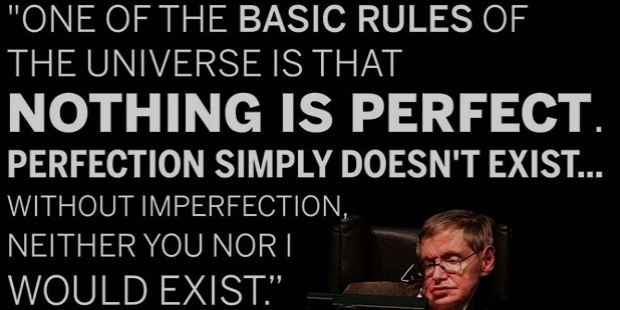
1975–1990:
In 1975, Hawking returned to Cambridge as Reader in Gravitational Physics. He received immense academic recognition for his work. Awards started being conferred to this genius mind post mid-70s. Eddington Medal and the Pius XI Gold Medal in 1975, Dannie Heineman Prize in 1976, Albert Einstein Medal and an Honorary Doctorate from the University of Oxford in 1978 were conferred to Dr. Stephen Hawking. In 1977, he was appointed as a Professor, with a Chair in Gravitational Physics. He was elected as the Lucasian Professor of Mathematics in University of Cambridge during the late 70s. Hawking’s promotion coincided with a health crisis. Reluctantly, he accepted some nursing services at home.
Simultaneously, he was also in a transitional mode towards his approach to Physics. He became more intuitive and speculative, rather than insisting on mathematical proofs. He confided in Kip Thorne that he would rather be right, than rigorous. In 1981, Hawking proposed that information in a Black Hole is irretrievably lost, when a black hole evaporates. The information led to years of debate and gave birth to ‘The Black Hole War’ with Leonard Susskind and Gerard ‘t Hooft. The no-boundary proposal initially predicted a closed Universe, which had implications about the existence of God. Hawking explained, “If the Universe has no boundaries but is self-contained, then God would not have had any freedom to choose how the universe began.” Hawking spoke of God in a metaphorical sense in his works earlier.
However, Hawking did not rule out the existence of a Creator. ‘In A Brief History of Time’ Hawking wrote: “If we discover a complete theory, it would be the ultimate triumph of human reason – for then, we should know the mind of God.” In the same book he suggested that the existence of God was not necessary to explain the origin of the universe. Later discussions with Neil Turok led to the realisation that the existence of God was also compatible with an open universe. Hawking was awarded the American Franklin Medal in 1981. In the 1982 New Year Honours, Hawking was appointed a CBE – Commander of the Order of the British Empire.
These awards and honours did not change Hawking's financial status significantly or motivated by the need to finance his children's education and home expenses. In 1982, he signed a contract with Bantam Books to receive a large advance for his book titled ‘A Brief History of Time’. One of the first messages Hawking produced with his speech-generating device was a request for his assistant to help him finish writing ‘A Brief History of Time’. April 1988, the book was published in the US, followed by UK in June. ‘A Brief History of Time’ rose to the ‘Top of the Bestseller’ lists in both the countries.
The book, which was translated in many languages was a huge success and sold as many as 9 million copies worldwide. Financial rewards were significant and so were the challenges of becoming a celebrity. Hawking was conferred with five more honorary degrees. He was awarded the Gold Medal of the Royal Astronomical Society in 1985 and the Paul Dirac Medal in 1987. He was awarded jointly with Penrose, the prestigious Wolf Prize in 1988. During his birthday honours in 1989, Hawking was appointed a CH – Companion of Honour. He was also honoured with a knighthood, which he declined with great humility.
1990–2000:
Hawking and Penrose delivered a series of six lectures in 1994 at Cambridge's Newton Institute, which were published in 1996 as ‘The Nature of Space and Time’. Later in 1997, Hawking conceded a 1991 public scientific wager made with Kip Thorne and John Preskill of Caltech. Hawking had bet that Penrose's proposal of a ‘Cosmic Censorship Conjecture’ – that there could be no ‘naked singularities’ unclothed within a horizon – was correct. Hawking maintained his public profile to bring science to a wider audience. A film version of ‘A Brief History of Time’ premiered in 1992. The film was directed by Errol Morris and produced by Steven Spielberg. The film was critically acclaimed. However, it was not released widely for unknown reasons. A six-part television series ‘Stephen Hawking's Universe’ and a companion book appeared in 1997.
2000–2018:
Hawking continued to travel widely. He made trips to Chile, Easter Island, South Africa, Spain, Canada and numerous trips to the United States. Hawking increasingly travelled by private jet. By 2011, it had become his only mode of international travel because of his renowned status and disability. Consensus among physicists was growing by 2003 that Hawking was wrong about the loss of information in a Black Hole. Hawking conceded his 1997 bet with Preskill in a lecture in Dublin in 2004. He called the alleged loss of information in Black Holes his “biggest blunder” in January 2014. Hawking had emphatically argued another longstanding scientific dispute to a wager that Higgs boson would never be found. In 1964, Peter Higgs, as part of the ‘Higgs Field Theory’, had proposed the particle exists. In 2002 and again in 2008, there was an intense public debate between Higgs and Hawking over the matter.
Higgs went onto criticize Hawking’s work. He even complained that “Hawking’s celebrity status gives him instant credibility, which others do not have”. Following the construction of the Large Hadron Collider, the particle was discovered in July 2012 at CERN. Hawking conceded immediately of losing the bet. He even suggested publicly that Peter Higgs should win the Nobel Prize for Physics. In 2013, Peter Higgs was honoured with the Nobel Prize. Hawking and his daughter Lucy published ‘George's Secret Key to the Universe’, a children's book. The book explained Theoretical Physics in an accessible fashion and featured characters similar to those in the Hawking family. The book was followed by sequels in 2009, 2011 and 2014. In 2006, Hawking was awarded the Copley Medal from the Royal Society, the Presidential Medal of Freedom – America's Highest Civilian Honour in 2009 and the Russian Special Fundamental Physics Prize in 2013. Hawking’s name became synonymous with various prominent buildings of the world.
Stephen W. Hawking Science Museum in San Salvador, El Salvador, the Stephen Hawking Building in Cambridge and the Stephen Hawking Centre at the Perimeter Institute in Canada are just to name a few. Hawking supervised 39 successful PhD students during his career. In 2009, Stephen Hawking retired as Lucasian Professor of Mathematics from Cambridge University as per regulations. Hawking was awarded an Honorary Doctorate from the Imperial College London in July 2017.
Zero Gravity Trip:
In 2007, Hawking took the ride of a lifetime to experience zero-gravity and float out of his wheelchair. All thanks to Zero Gravity Corp. The service involves an airplane ride in which sharp ascent and descent allows passengers to experience weightlessness in flight for several rounds, each about 25-seconds long. For the first time in four decades, Hawking was free from his wheelchair. He even performed gymnastic flips much to his delight.
Family Life:
Stephen Hawking married Jane Wilde on the 14th of July 1965. The couple was blessed with their first son Robert in May 1967, while she had just commenced her PhD programme. Three years, their daughter Lucy was born in 1970. Timothy is the youngest, who arrived nine years later in 1979. Jane took great care of Stephen’s ambitious academic career. In 1974, upon Hawking’s appointment to a year-long position at the California Institute of Technology in Pasadena, California, Jane proposed that a graduate or post-doctoral student live with them and help with his care. Hawking accepted, and Bernard Carr travelled with them as the first of many students.
The family spent a generally happy and stimulating year in Pasadena. In 1975, Hawking returned to Cambridge in a new home and a new job as a Reader. Hawking had begun a close friendship with Don Page at Caltech. She arrived as the live-in graduate student assistant to work for him. Jane's responsibilities were reduced. She returned to her thesis and her new interest in singing. While Hawking found Page, Jane met organist Jonathan Hellyer Jones during choir singing in a church. Jane and Jonathan remained platonic for a long period and by the 80s, Hawking’s marriage was strained. Tension grew between the two.
Hawking had grown closer to Elaine Mason. She was one his nurses, who was very protective about Hawking. February 1990, Hawking informed Jane that he was leaving her for Elaine. In 1995, Stephen and Jane were divorced. Hawking got remarried to Elaine Mason in September the same year. Hawking's children and staff became worried for being marginalized and excluded from his life after his second marriage. Hawking and Mason divorced quietly in 2006 amidst speculations of him being physically abused. After his divorce with Elaine, Hawking resumed closer relationship with Jane, their children and grandchildren.









